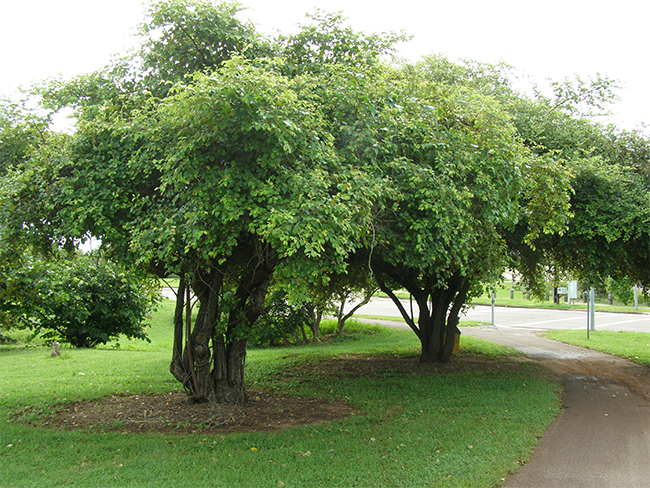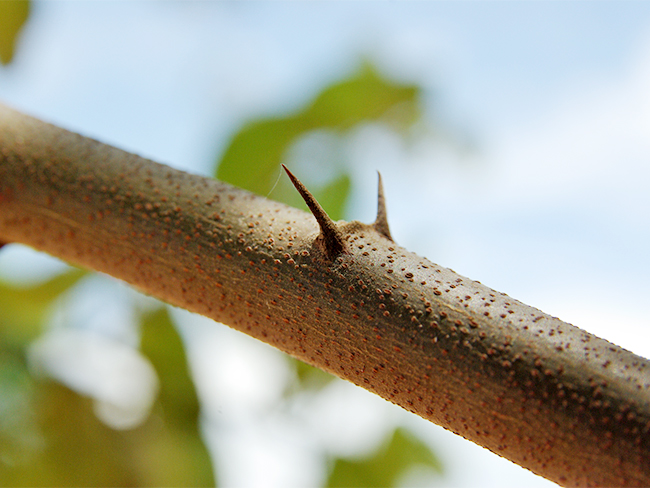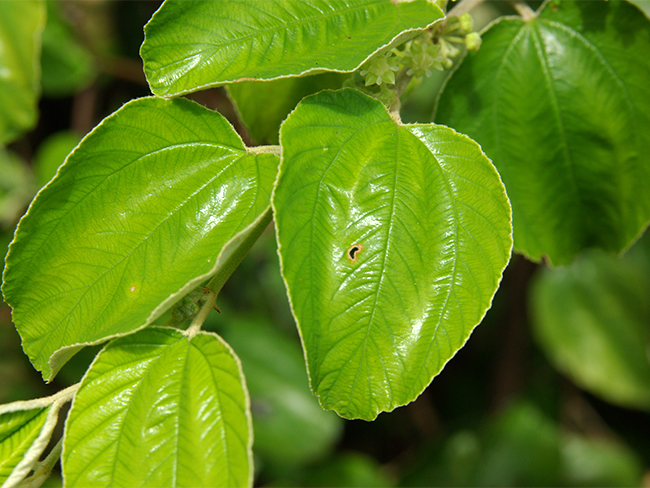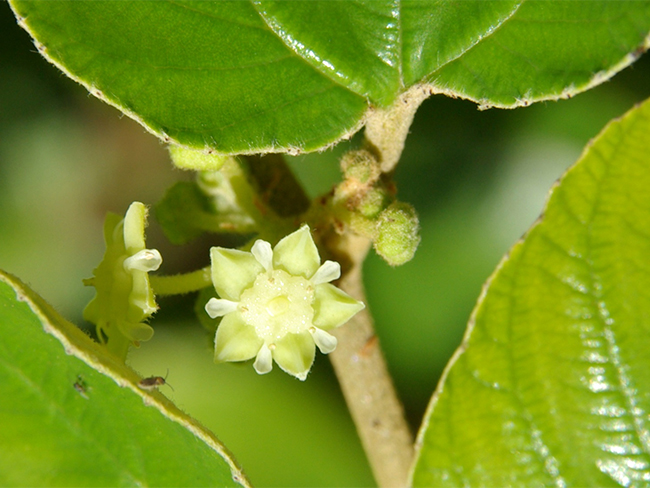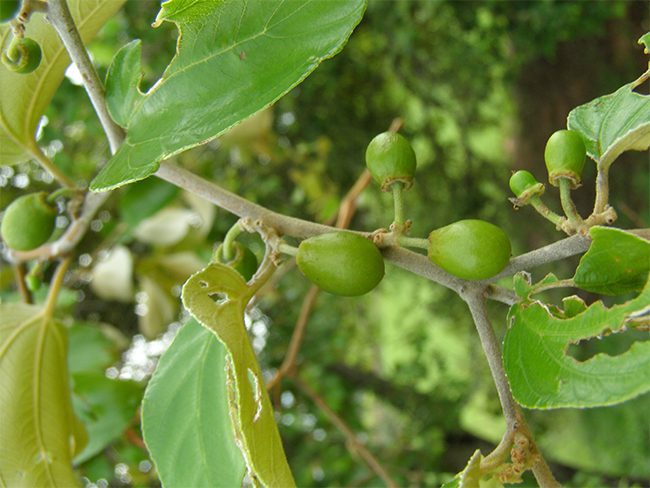Chinee apple
Scientific name: Ziziphus mauritiana
Declaration status: Class A
Chinee apple has a statutory weed management plan PDF (1.4 MB) which outlines the legal requirements for control. You can read a summary of the chinee apple 2021 weed management plan review PDF (1011.4 KB).
Learn how to manage chinee apple on your property in the weed management guide PDF (2.9 MB).
Chinee apple is native to southern Asia and eastern Africa.
It was first recorded in the Torres Strait in 1863, and in Townsville, Queensland in 1916.
Since then it has spread extensively through the dry tropics in Queensland, mostly in disturbed areas.
It was probably introduced as a shade and fruit tree.
Isolated infestations occur in a range of tenures in the Top End and Katherine regions.
It is dense along small tributaries of the Katherine, Roper, McArthur and Victoria Rivers.
There are also known infestations in Bing Bong Harbour.
Impact
Chinee apple can have all of the following impacts:
- grows well in disturbed or cleared areas
- forms dense thickets
- dramatically alters native environment
- dramatically reduces stocking rates
- impedes mustering
- restricts stock access to water.
Identification
You should use this as a guide. There may be other plants or weeds that look similar.
- large thorny shrub or small spreading tree between 3m to 6m tall
- bark is dark grey to black
- branchlets have fine hair and a zigzag form with a leaf and thorn at each angle
- leaves are glossy green above and woolly and white underneath, rounded with a toothed margin
- tiny cream-coloured flowers, in small clusters that produce a bad smell
- round shaped fruit turns from green to yellow and reddish-brown when ripe.
To find out more, get the Chinee apple weed note on the Department of Environment, Parks and Water Security website.
If you are unsure, contact the Weed Management Branch.
Control
Mechanical control or burning can be used to improve access to infested areas for follow up chemical control.
Basal barking can be effective on trees of larger diameter.
Basal barking, being less labour intensive than cut stumping, may be a preferable option for sparse or remote infestations.
Cut stump applications may be the best management option for trees in urban/landscaped situations where the dead tree material will be removed to retain aesthetics.
Chemical control
The best time to treat chinee apple is from March to May. Below is a list of treatment methods that can be used.
| Chemical and concentration | Rate | Situation, method and notes |
|---|---|---|
|
Aminopyralid 8 g/L + Triclopyr 300 g/L + Picloram 100 g/L Grazon® Extra | 350mL / 100 L |
Seedling (individuals and infestations): Foliar spray, apply when actively growing + non-ionic wetting agent required |
|
Triclopyr 300 g/L and Picloram 100 g/L Various trade names | 350mL / 100 L |
Seedling (individuals and infestations under 2m): Foliar spray, apply when actively growing + non-ionic wetting agent required |
|
Triclopyr 600 g/L Various trade names |
1L / 60L (diesel) 1 L / 60 L (diesel) |
Seedling (individuals): Basal bark < 5cm stem diameter Adult (individuals or infestation): Cut stump > 5cm stem diameter |
|
Fluroxypyr 333 g/L Starane® Advanced |
1.8L / 100L (diesel) 1.8L / 100L (diesel) |
Seedling (individuals): Basal bark < 15cm* stem diameter, treat up to 45 cm from ground Adult (individuals or infestation): Cut stump > 15 cm stem diameter |
|
Triclopyr 240 g/L + Picloram 120 g/L Access® |
1L / 60L (diesel) 1L / 60L (diesel) |
Seedling (individuals): Basal bark < 15cm* stem diameter Adult (individuals or infestation): Cut stump > 15cm stem diameter |
|
Picloram 20 g/kg Tordon® granules | 35 to 45g / m2 | Apply granules over an area extending from the main stem to 30cm outside the dripline to cover the main part of the root system |
Foliar spray is suitable for seedlings up to 1m tall. A fine spray with low application pressure enables good coverage of the whole plant. This method can be applied at any time that seedlings are actively growing.
Basal bark treatments are best administered during the active growing season.
This will be approximately March to May depending on the onset of rain and location.
This method involves spraying around the whole stem up to 300mm from the ground.
Cut stump treatments can be undertaken at any time of year, but are best administered during the active growing season. This method involves applying herbicide to a newly cut stump immediately following chain sawing.
Given chinee apple’s resilience to physical disturbance and its capacity to rapidly regenerate, follow up spraying of regrowth is essential.
Non-chemical control
Blade ploughing
A blade plough is used to push over some woody shrubs and sever their roots underground.
Bulldozing
Bulldozers, chopper rollers or graders are used to clear large weed infestations. This leaves large areas of soil exposed so follow up control or revegetation should be considered.
Stick raking
A large blade with teeth attached to a bulldozer is used to clear large weed infestations.
This leaves large areas of soil exposed so follow up control or revegetation should be considered.
Given the low levels of chinee apple infestations in the Northern Territory, this method of control is generally considered inefficient and cost prohibitive.
Spread
Chinee apple seeds can be spread by:
- domestic stock
- feral animals
- people who like to eat the fruit.
Germination is much more likely if the fruit has been eaten as this removes or damages the endocarp and releases the seeds.
Seeds can remain viable in soil for at least a year.
In the Northern Territory, most chinee apple spread can be attributed to deliberate plantings in homesteads and communities, some of which have spread far beyond original planting sites.
Spread prevention
You can prevent the spread of chinee apple by doing all of the following:
- map infestations to help develop a management plan
- control minor infestations, isolated outbreaks or seedlings first
- designate wash down areas and actively work to prevent contamination of clean areas
- isolate and monitor newly transported stock
- preventing grazing in areas where chinee apple fruit is available
- schedule control works to occur prior to fruiting
- monitor areas that you have treated and watch for re-infestations
- discourage collection and consumption of fruit.
Give feedback about this page.
Share this page:
URL copied!
